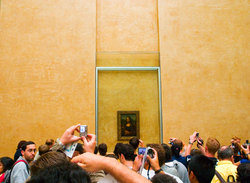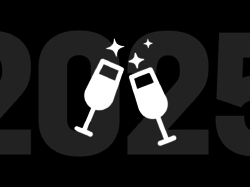
A small change in the rules can spark dramatic behavior shifts, not always for the better.
Consider the Louvre. For the last couple of years, the Louvre has banned photos in the museum’s most crowded galleries, where its most famous works are on display. This week, they lifted the ban.
The result: Museum visitors were instantly transformed into a slavering, uncouth herd of elbowing nuts hellbent on getting their snapshots. Like A-list celebrities, the Venus de Milo and Mona Lisa are swarmed by paparazzi who will do anything for their photo.
At this time of year, the Louvre is always a mad scene, where some of the world’s highest works look down on some of the world’s lowest behavior. But allowing photos in the busy galleries made a clear change for the worse. A visit to Mona Lisa’s gallery late in the day on Monday revealed a room badly treated after a day of maniac tourism. Shredded museum maps and discarded soda bottles were scattered on the floor.

Photography leads to bad behavior? What happened?
Visitors’ goals changed. The change in rules turned a contemplative objective into a competitive one. They were no longer there to view the works but to get their souvenir pictures. Other visitors became either obstacles and competitors in the pursuit of that goal. Previously content to view the work from a distance, getting to the front of the crowd is now an imperative, shoving and jostling the way to get there. It’s a scrum.
It’s also a useful reminder for anyone who’s responsible for designing any interface or experience. Adding a feature, changing the environment or tweaking the rules can have unintended consequences on goals and behaviors.





